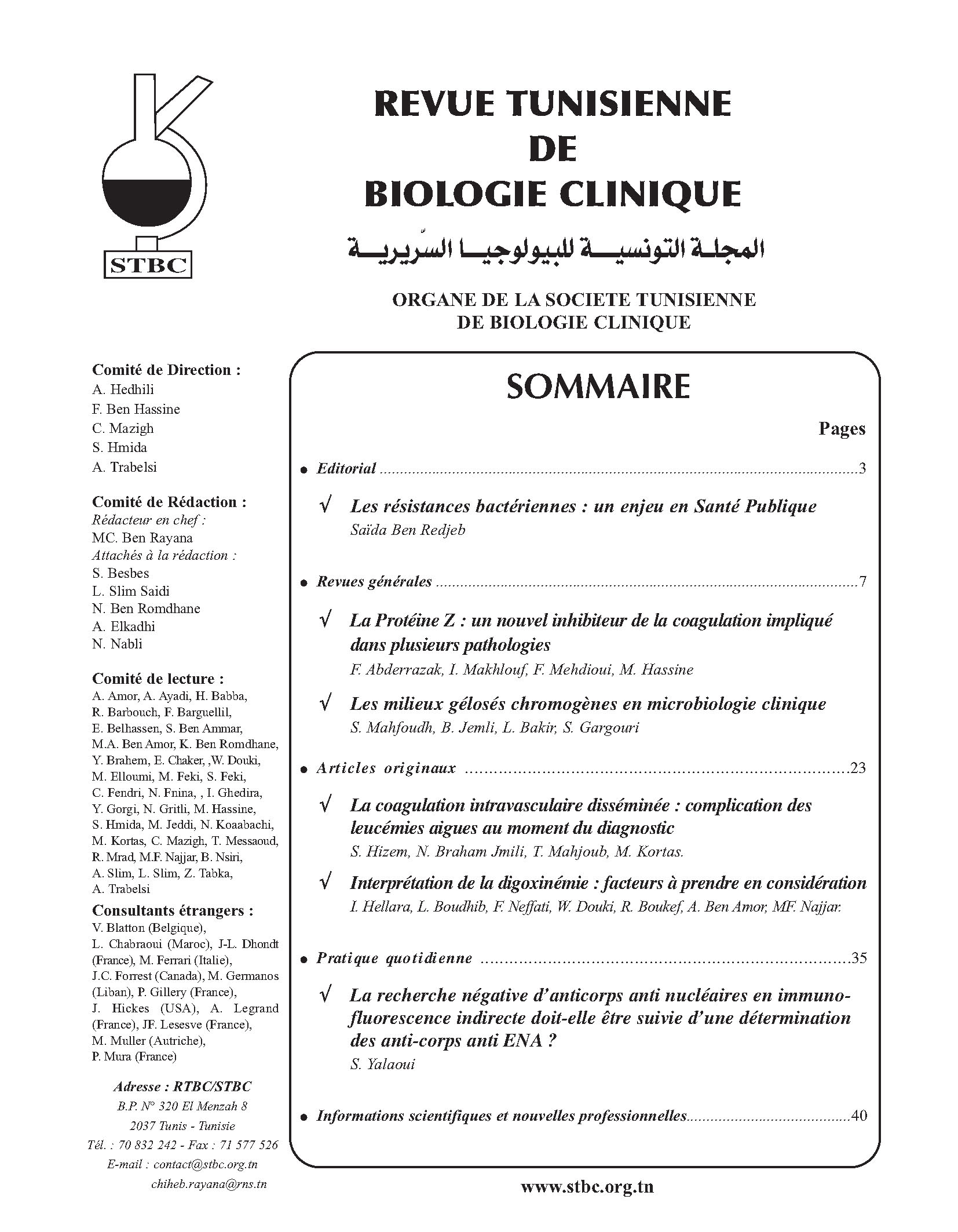Abstract
Indirect immunofluorescence (IIF) on Hep-2 cells is the initial screening test for detection of antinuclear antibodies (ANA). If the result is positive and depending on the pattern and titre of fluorescence, a search for antibodies to extractable nuclear antigens (ENA) is carried out with other assays. On the contrary, a negative result of the screening for ANA is not followed by anti-ENA antibodies testing. However some authors recommend to seek anti-ENA antibodies, according to the clinical context, in spite of a negative initial result by IIF. This article discusses this last attitude and underlines the need for a close cooperation between biologist and clinician in order to rationalize this type of cascade testing. Assays for the determination of anti-ENA antibodies can be expensive and may not have the desired diagnostic contribution.

This work is licensed under a Creative Commons Attribution 4.0 International License.
Copyright (c) 2023 Revue Tunisienne de BIOLOGIE CLINIQUE


